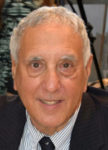

SAN DIEGO — New Zealand’s Jewish community is celebrating a new website, jewishlives.nz, in which Jewish Kiwis’ past, present, and plans for the future will be shared with each other and the rest of the world. New Zealand’s Jewish population is estimated at 7,500, out of a total New Zealand population of 4.2 million, according to the independent TotallyJewishTravel website.
Roger Moses, chair of the jewishlives.nz trustees, said the new website, which was launched last Monday, is intended “to provide a platform for people to learn about the contribution made by New Zealand Jews, increase tolerance and understanding, and combat antisemitism.”
The new site will incorporate material from the previous Jewish Online Museum site, and additionally will post information “about what is going on in the wider community and things that are of interest and affect us,” Moses said. Goals are to share stories about contemporary New Zealand Jewish life and spreading understanding about the community among non-Jews.
“It is only by building and sharing that sense of community, and by building resilience in that, that we will be able to create a future for the community,” Moses said. “It is also about getting younger people interested in being part of that community. To feel that we are a part of something bigger. We intend to be the “go to” website for those who want to know what’s happening in the community.”
Nine stories are featured in the website’s debut:
1) “The Trunk Project” tells of four trunks with contents assembled by Holocaust Centre of New Zealand that include books about the Holocaust and replica artifacts from the period including yellow Jewish stars from various Nazi-occupied countries, passports issued under the Nazi regime, and lesson plans for students. “We can take these exhibitions anywhere,” comments Chris Harris, CEO of the Holocaust Centre. “The benefit is that we can take them deep into areas where there may be no Jewish population, and where people may not otherwise encounter these stories.”
2) A biographical sketch of actress Deb Filler whose one-woman show, “Punch Me in the Stomach,” tells of visiting Poland with her father, who lost much of his family in the Holocaust. In that show, which she performed around the world for 12 years, Filler portrayed 36 characters. Today, she devotes herself to happier material, and has become known as as “New Zealand’s Only Jewish Comedian.” Titles for some of her current shows include, “I Did It My Way;” “I Lost It in Kiev,” and “Don’t Get Me Started.”
3) “Bob Narev; From the Holocaust to an Honored Kiwi” tells of a New Zealand attorney and businessman who spent part of his childhood in the Theresienstadt ghetto/ concentration camp and as an adult served in the presidencies of the Auckland District Society of Notaries, Auckland Hebrew Congregation, Auckland Zionist Society, and the Zionist Council of New Zealand. He was chairman of the United Synagogues of NZ, and is a member of the New Zealand Order of Merit.
4) An article by Mike Regan in which he posed the question to nine New Zealand Jewish artists:”Does the Holocaust influence contemporary Jewish art?” Giving their answers, along with some examples of their work, are Miriam Harris, Noah Laundau, Julie Einhorn, Helen Schamroth, Gerda Cohen, Helene Carroll, Don Copeland, Keren Cook, and Gail Haffern.
5) “Yes, There is Jewish Art/ No, there is no Jewish Art” capsulizes a long-standing debate about whether art is Jewish, or whether it was executed by someone who happened to be Jewish. And if the subject matter is Jewish, is it still “Jewish art” if the artist was a non-Jew?
6) “20th Century New Zealand Visual Arts,” based on the works of Leonard Bell, tells of accomplishments by New Zealanders of Jewish religion or descent such as architect Max Rosenfeld, architect/ engineers Friedrich Neumann and Helmut Einhorn; photographers Frank Hofmann, Irene Koppel, Marti Friedlander, and Lawrence Shustak; painters Frederick Ost, Patrick Hayman, and Friedensreich Hundertwasser; and art collectors Ernst Davis, Moss Davis, Willi Fels, Walter Auburn, Lore Auburn, Charles Brasch, Harriet Friedlander, Les Paris, and Milly Paris.
7) “The Auckland Hebrew Congregation” tells of the congregation’s plans to move from its center city site, which it has occupied since 1967, to Remuera Road in the “leafy suburbs.” According to Rachel Lerner, who is managing the relocation, “The city has grown around us in a way that no longer meets the community’s needs. Amongst others, there are problems with parking, security, and a lack of green space for the school.”
8) “Hundertwasser’s Ongoing Connection with New Zealand” reprises the life of the artist/ architect/ environmentalist who immigrated to New Zealand from Austria after his career as an artist was well known. In New Zealand his best known works are the ornate “public toilets in Kawakawa which are a popular tourist destination.”
9) “Te Jewry: An Online Exhibition” is an essay in image and text by David Cohen that explores the relationship between the Maori and Jewish peoples of New Zealand.
*
Donald H. Harrison is editor of San Diego Jewish World. He may be contacted via donald.harrison@sdjewishworld.com